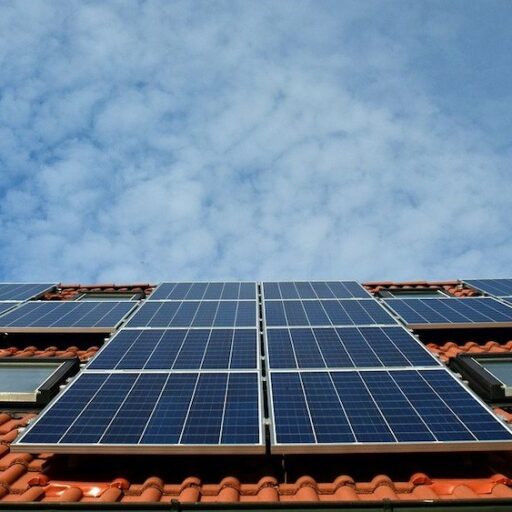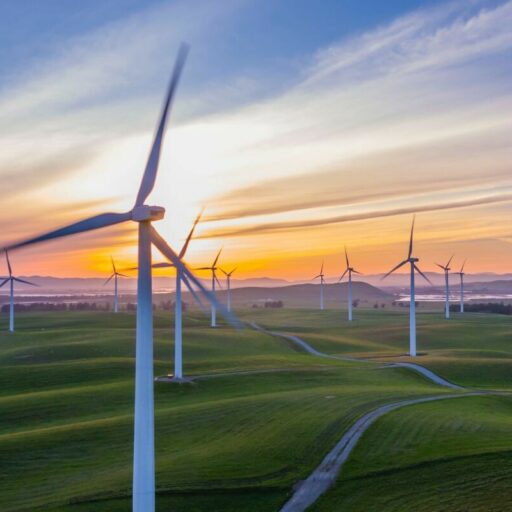Talk about low-hanging fruit. Here are a dozen fairly simple ideas to slash emissions. Why aren’t we doing them?

CO2 is synonymous with warming, but methane is also a potent planet heater – the second biggest cause, in fact – and one released on a massive scale in ‘super emitter’ leaks from oil and gas fields all over the world.
Satellite data revealed more than 1,000 super emitters active in 2022, alongside dozens of ‘methane bomb’ fossil fuel extraction sites with the potential to leak methane equivalent to three decades of all US greenhouse gas emissions.
However, the International Energy Agency reckons around three quarters of methane emissions, accounting for 30 per cent of the rise in global temperatures, could be avoided through simple measures like upgrading leaky equipment and implementing leak detection. Let’s get it done.
Image: Zbynek Burival

Emissions from the burgeoning global SUV fleet – some 1bn tonnes a year – outweigh that of most countries according to the International Energy Agency. SUVs use around 20 per cent more oil than an average-sized car, and even plug-in beasts don’t escape criticism – a large, inefficient vehicle means more materials and energy for construction, particularly for the outsize battery.
Paris is bidding to rein in ‘auto-besity’ via premium parking rates for SUVs, but some suggest going even further. Writing in the Financial Times, Simon Kuper says we need to ‘legislate away’ from our love affair with the SUV altogether.
“We already regulate cars themselves in all sorts of ways,” he writes. “If we let SUVs keep fouling the planet, we might as well admit there’s no sacrifice we’re willing to make for the climate.”
Image: Omar Roque

VAT and duties account for more than 50 per cent of the price we pay at pumps for road fuel. It stands to reason that jet fuel would be similarly taxed, right? Unbelievably, not so.
Long-standing international agreements exempt aviation from fuel taxes, and although the European Union has mooted an overhaul of the measure for years, it’s yet to achieve lift off.
Ironically, while airlines enjoy a tax-free bonanza, greener forms of travel pay through the nose. In the UK, levies account for 40 per cent of electricity costs for train operators, and international tickets in many countries are charged VAT.
“There’s none on air tickets for the same journey,” says Mark Smith, founder of train travel website Man in Seat 61. “And airlines are given a big, hidden subsidy by getting all their kerosene tax-free. If we want to get people onto lower carbon forms of travel, we have to reverse this.”
Image: Alexey Starki

Air miles and their ilk have been a staple aviation perk for decades, but when research points to frequent flyers causing as much as half of the airline industry’s carbon emissions, doesn’t it seem insane to reward them?
As well as incentivising unnecessary flights, points can be cashed in for upgrades to first class, where seats carry a carbon footprint four times larger than economy. Rather than encouraging frequent flyers, Stefan Gössling, professor of tourism research at Sweden’s Linnaeus University, suggests ditching reward schemes entirely.
“A psychology of denial is at work in particular in frequent flier circles, making it necessary to address these groups through market-based or command-and-control strategies,” he writes.
Image: Marco López

Why fly when a train will do? That’s the thinking behind France’s supposed ‘ban’ on domestic flights that can be covered by train in less than two and a half hours, widely celebrated as a world first. However, critics point out that only a tiny fraction of routes have been affected – the ban doesn’t cover private jets, connecting flights, or flying between Marseille and Lyon, for example.
Data crunching by the University of Manchester, England, found that short hop flights were the main cause of aviation emissions in Europe, with many routes covering less than 300 miles (483 km) between cities with good existing public transport. A short-haul ban would ‘dramatically reduce emissions’ the study found.
Spain could be the first to follow France’s lead, while Belgian mobility minister Georges Gilkinet said in June he wants to ban ‘flea hop’ flights between neighbouring airports.
Image: Pekic/iStock

Solar is good for the environment, good for fuel bills, and good for smart, local energy generation. In short, it’s a no-brainer.
Trade body Solar Energy UK is pushing for mandatory solar panels to be included on the forthcoming Future Homes Standard, a set of building regulations that will require homes built in the UK from 2025 onwards to produce 75-80 per cent less emissions. “Solar really should be the default standard,” said Solar Energy UK’s Gareth Simkins.
Simkins says that depending on the size of the array, adding solar increases the cost of a new build by £5,000-£10,000, equivalent to between 1.75-3.5 per cent of average UK house prices. The investment buys you clean, free energy for decades. It’s already happening in Berlin (main picture) where as of this year, all new buildings must dedicate 30 per cent of their roof space to solar.
Image: Ulleo

An effective ban on onshore wind turbines in England means that a pitiful two were installed in 2022. The problem lies with planning policies in place since 2015, which gives local authorities – and the communities they represent – the final say on where turbines should be built.
The UK government has been flip-flopping for months over relaxing planning rules to lift England’s onshore ambitions out of stagnation, while critics accuse ministers of dumping green policies in a bid to appease voters.
On wind, though, Rishi Sunak and co could be misguided – polling by trade body Renewable UK shows that 64 per cent of 2019 Tory voters think the new government should end the current block on onshore wind in England, where it has local support. UK-wide, onshore wind apparently has the backing of a majority of voters – ranging from 64 to 93 per cent – in every single constituency.
Image: RawFilm

We’re well used to the idea of making do and mend for the little things in life – power tools, appliances, clothes. But what about houses, office blocks, retail centres?
Some 40 per cent of global greenhouse gas emissions come from constructing, heating, cooling and powering buildings, according to the World Green Building Council. Much of that toll is in embodied carbon – the CO2 emitted in making construction materials, as well as the construction process itself.
While knock it down and start again is the norm, the reality is that the most sustainable building is the one you don’t build, so it makes sense to recycle and retrofit. The Intergovernmental Panel on Climate Change says that 61 per cent of global building emissions could be cut by 2050, with some of the biggest gains to be had by renovating existing buildings in developed countries.
Image: Peter Horrox/iStock

With food systems behind around a third of emissions, changing our diets is a crucial tool in steering us towards a net-zero, nature positive future. And – let’s face it – munching our way to a healthier planet isn’t much of a chore.
The Worldwide Fund for Nature’s Livewell diet plan, published recently, could reportedly cut food-related emissions by 36 per cent, and reduce biodiversity loss by a fifth – without the need to ditch meat and dairy entirely.
Supporting its citizens to embrace a healthier diet is Denmark. Government dietary guidelines introduced two years ago recommend reducing meat, and boosting beans and pulses to 100g a day to pick up the protein fix.
Image: Sonny Mauricio

Reversing decades of intensive farming practices is a massive ask, but the gains are potentially huge. Research by the Rodale Institute, a US non-profit, suggests that embracing regenerative agriculture could draw 150 per cent of global emissions into the ground every year.
That means ditching fertiliser, restoring hedgerows, stopping ploughing and using cover crops to sequester carbon. Leaving the soil to do its thing is also great for underground fungi networks, which are major carbon sinks.
Image: Gozha Net

Cloud computing. Sounds fluffy, benign. Certainly not something you’d associate with emissions. Now instead of ‘cloud’, think massive building housing thousands of hard drives, all guzzling energy and pumping out heat. And think of all the components and materials required to build those drives, not to mention the air con units working over time to stop them from overheating.
You get the picture, please don’t upload it – your unwanted and duplicated snaps add around 11kg of CO2 to your annual carbon footprint.
Studies put cloud computing’s contribution to global emissions at somewhere between 2.5 and 3.7 per cent of the total – that’s more than the airline industry’s. Switching its energy supply to renewables is the answer. Thankfully big players are already making moves. Google, for example, has pledged to run on 24/7 clean energy by 2030.
Image: Yura Fresh

All the above are big policy moves, and they’re not going to happen by sitting on our hands. It’s easy to feel helpless in the face of a global crisis, but there’s plenty of individual action you can take to help.
Vote for the party or candidate visibly committed to net zero. Vote with your wallet when choosing what to buy, who to bank with, who to trust with your pension fund. Lobby councillors and policymakers. Volunteer with a community energy group.
“Use your power as a citizen to support planning applications for sustainable projects and get involved in consultations,” says Louise Daniels, head of marketing with clean energy company Thrive Renewables. “Get involved with like minded people to inspire and support each other. Small actions count.”
Image: Callum Shaw
Main image: Bluejayphoto/iStock
Help us break the bad news bias
Positive News is helping more people than ever to get a balanced and uplifting view of the world. While doom and gloom dominates other news outlets, our solutions journalism exists to support your wellbeing and empower you to make a difference towards a better future. And as Positive News’ audience and impact grows, we’re showing the rest of the media that good news matters.
But our reporting has a cost and, as an independent, not-for-profit media organisation, we rely on the financial backing of our readers. If you value what we do and can afford to, please consider making a one-off or regular contribution as a Positive News supporter. Give once from just £1, or join 1,000+ others who contribute an average of £3 or more per month. You’ll be directly funding the production and sharing of our stories – helping our solutions journalism to benefit many more people.
Join our community today, and together, we’ll change the news for good.






